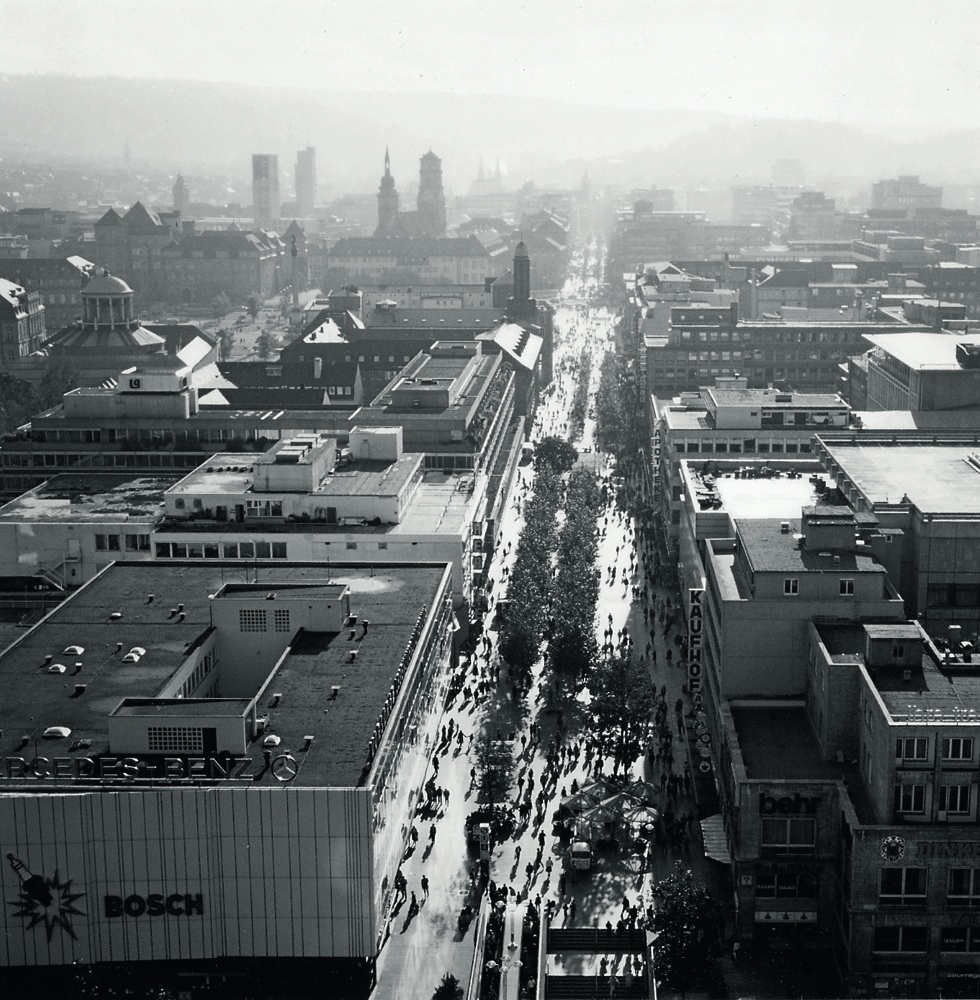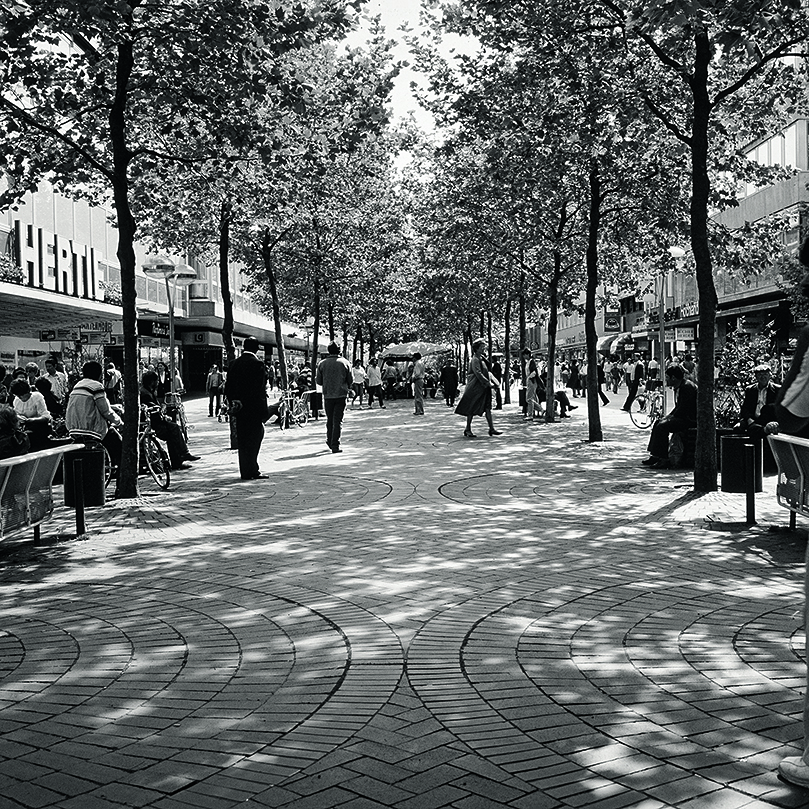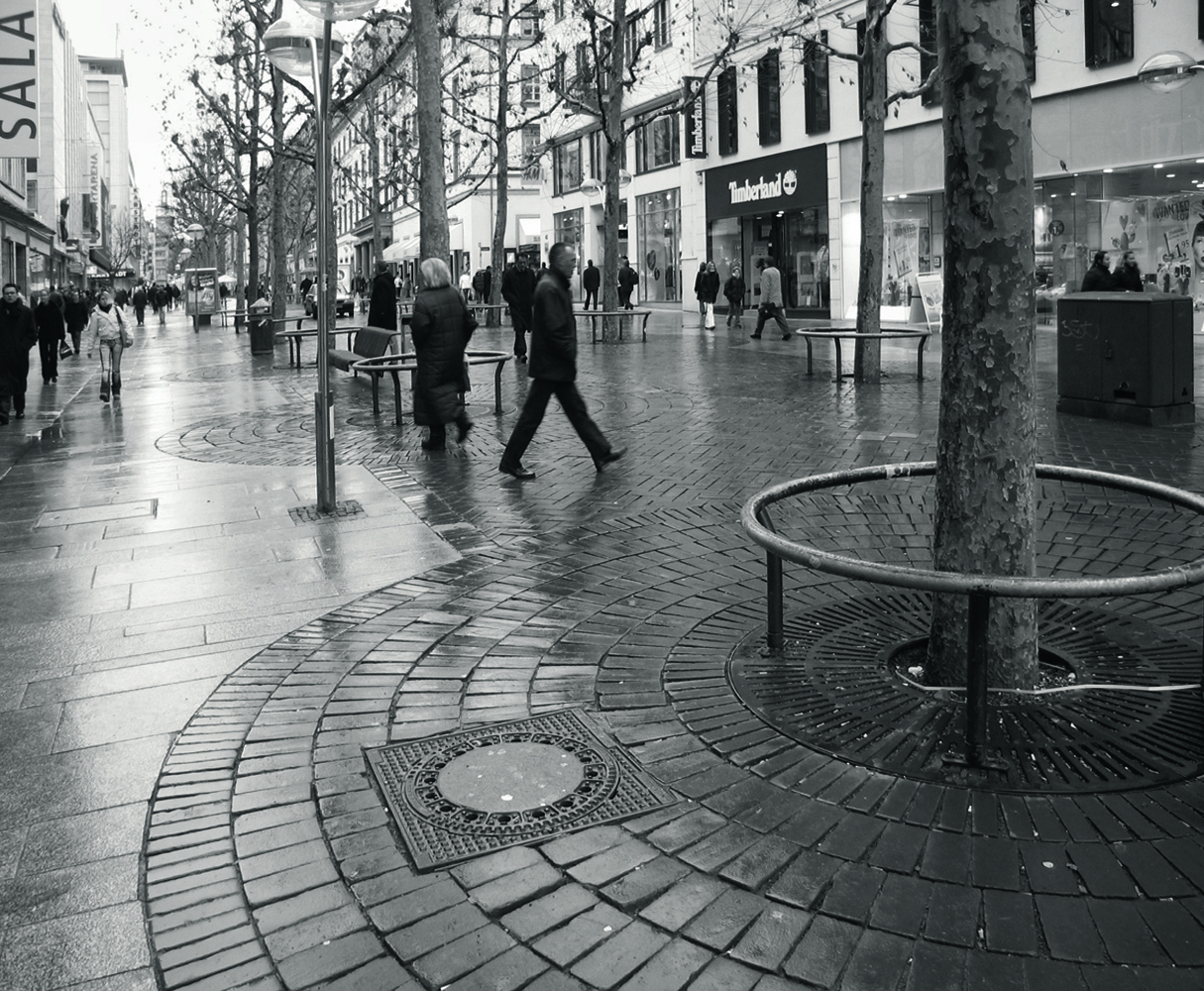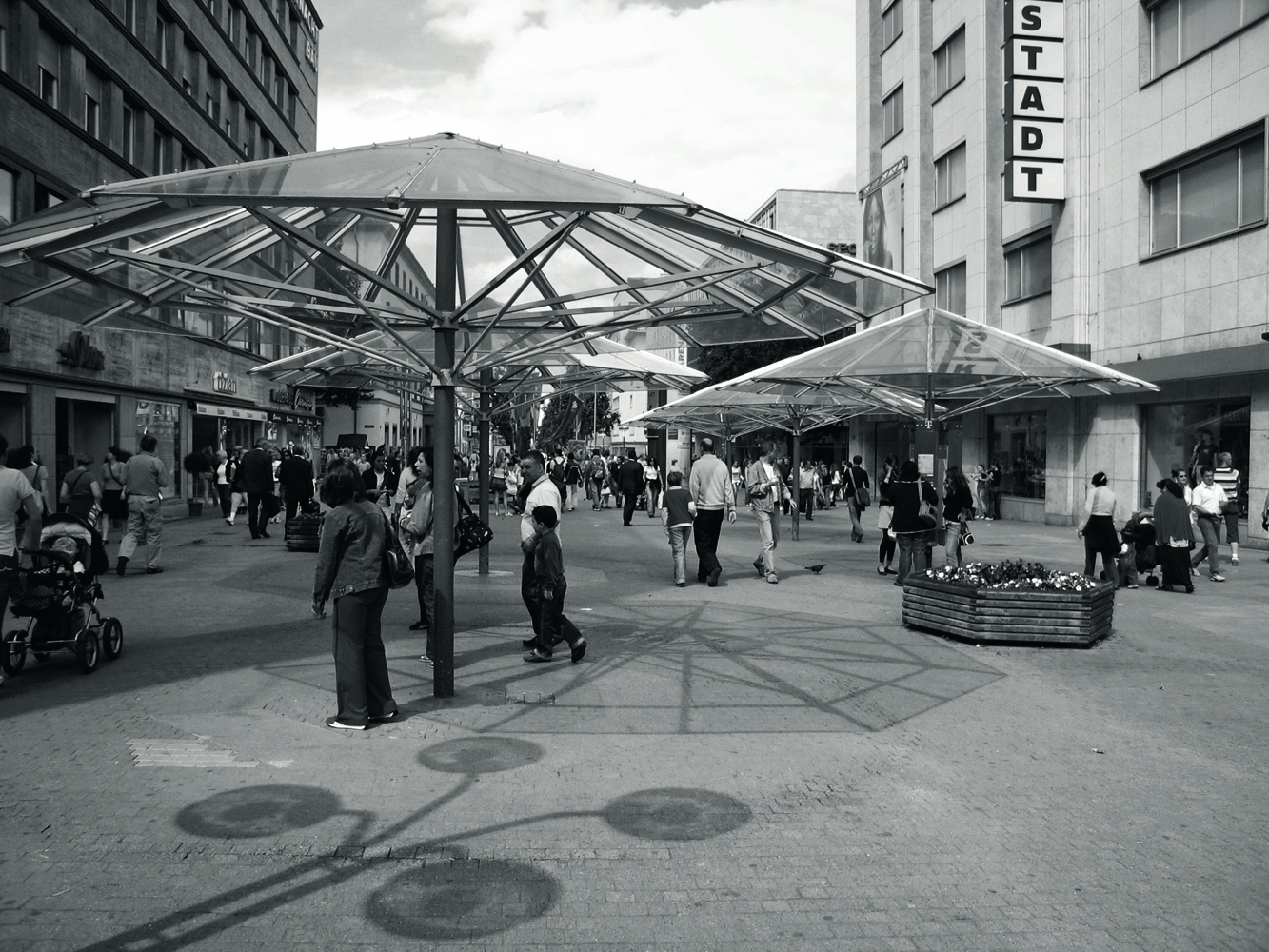Redesign of Principal City Squares and Pedestrian Passages
Schlossplatz und Königstrasse in Stuttgart
In the last thirty years Stuttgart's qualities as a "city between forest and vines" have been severely eroded. As a result, the major streets in the city, which used to serve many purposes are now more like railway lines. Roadways have had to make way for tram tracks and trees and pavements have had to make way for the roads: traffic thoroughfares instead of street spaces. About ten years ago it was decided to redesign Königstrasse and Schlossplatz. Königstrasse, the most important street in the city centre, was closed to traffic and Schlossplatz, the city's central square, was to be given a "facelift" together with the Schlosshof (Castle Courtyard) and the portion of Königstrasse which adjoins Schlossplatz. However, Schlossplatz - the Palace Square - was left basically unchanged. Some of the areas bordering it had been changed and the new square had to respond to these changes. Apart from this it was only a question of renewing the old, worn-out parts of the square. In the course of time the Neues Schloss (New Palace) had lost major areas of frontage on two sides. As a result, Schlossplatz, the "citizens’ square", becomes all the more important as a link between the city and the palace.
The outstanding features of Königstrasse are that it is unusually long for one of Stuttgart's inner-city streets, and that it has a focal point - Schlossplatz - exactly half-way along it. It is thus divided into lower and upper parts.
We emphasized the street's typical feature- its length- with avenues of trees, pavement patterns running lengthwise etc. In the transverse direction, the areas reserved for commerce are adjacent to the buildings, while the middle of the street tends to be devoted to rest areas. A continuous paving pattern, trees, special lighting, sculptures and fountains. The rest was provided by the businesses, to which space was allocated in abundance in this shopping street. The redesigning of Königstrasse and Schlossplatz has also played a part in encouraging Stuttgart's inhabitants to come into the city centre even when the shops are closed.
Following 30 years of intense use, a systematic renovation and modernisation of the Königstrasse was required, which took place in several stages between 2004 and 2008, realised by Behnisch Architekten



